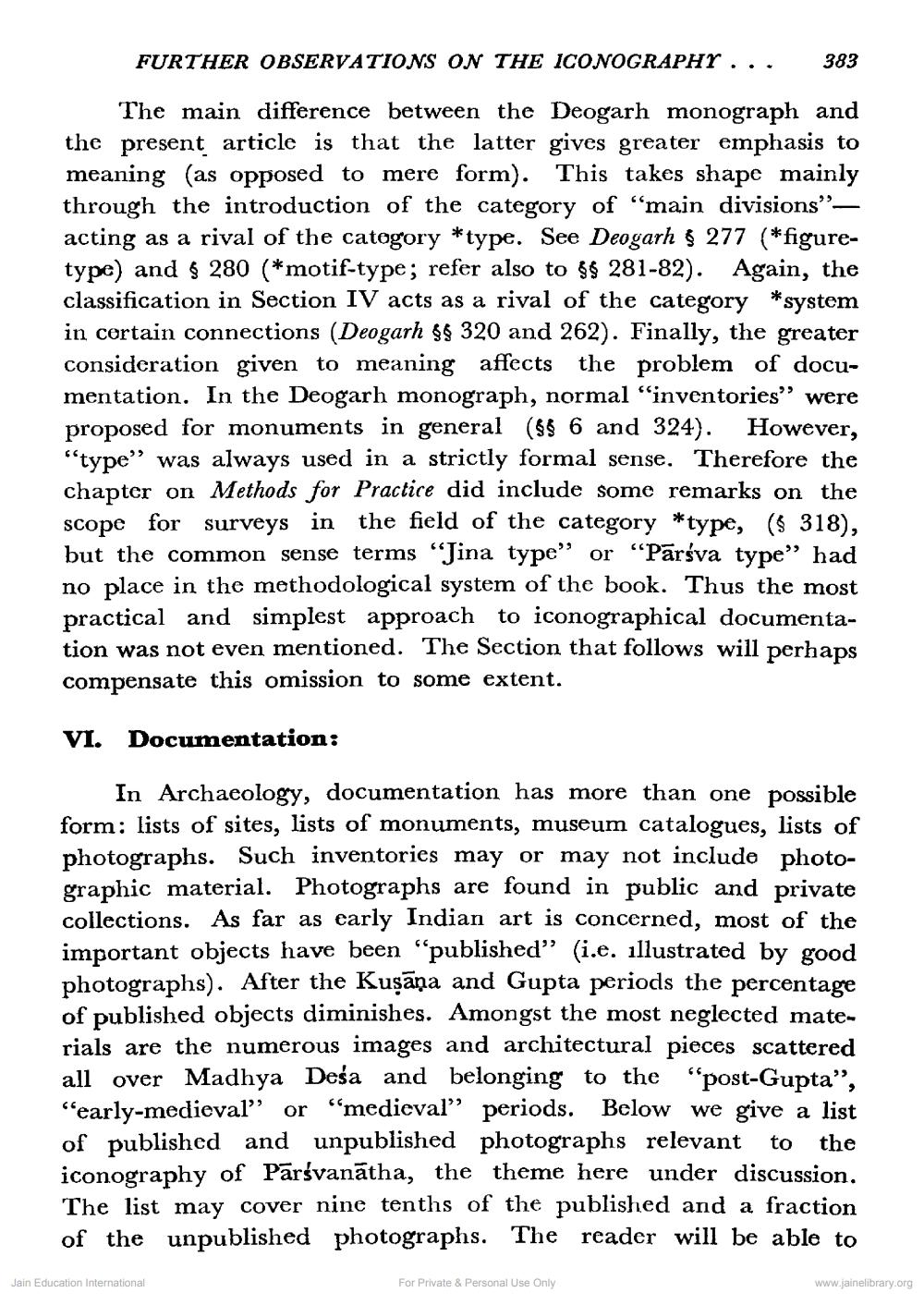________________
FURTHER OBSERVATIONS ON THE ICONOGRAPHY ...
383
The main difference between the Deogarh monograph and the present article is that the latter gives greater emphasis to meaning (as opposed to mere form). This takes shape mainly through the introduction of the category of “main divisions"acting as a rival of the category *type. See Deogarh § 277 (*figuretype) and $ 280 (*motif-type; refer also to 99 281-82). Again, the classification in Section IV acts as a rival of the category *system in certain connections (Deogarh $$ 320 and 262). Finally, the greater consideration given to meaning affects the problem of documentation. In the Deogarh monograph, normal "inventories" were proposed for monuments in general (98 6 and 324). However, "type" was always used in a strictly formal sense. Therefore the chapter on Methods for Practice did include some remarks on the scope for surveys in the field of the category *type, ( 318), but the common sense terms "Jina type” or “Pārsva type” had no place in the methodological system of the book. Thus the most practical and simplest approach to iconographical documentation was not even mentioned. The Section that follows will perhaps compensate this omission to some extent.
VI. Documentation:
In Archaeology, documentation has more than one possible form: lists of sites, lists of monuments, museum catalogues, lists of photographs. Such inventories may or may not include photographic material. Photographs are found in public and private collections. As far as early Indian art is concerned, most of the important objects have been "published" (i.e. illustrated by good photographs). After the Kusāna and Gupta periods the percentage of published objects diminishes. Amongst the most neglected materials are the numerous images and architectural pieces scattered all over Madhya Deśa and belonging to the post-Gupta”, "early-medieval" or "medieval periods. Below we give a list of published and unpublished photographs relevant to the iconography of Pārsvanātha, the theme here under discussion. The list may cover nine tenths of the published and a fraction of the unpublished photographs. The reader will be able to
Jain Education International
For Private & Personal Use Only
www.jainelibrary.org




